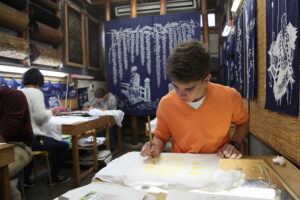Why Are Schools Unable To Address the Bullying Problem, and What Should Be Done?
The video of a White student putting a headlock on an Indian student went viral online, infuriating many netizens. On May 11th, at Coppell Middle School North in Texas, a 14-year-old Indian middle schooler, Shaan Pritmani was assaulted and eventually choked, and netizens were outraged that he received three days of suspension while the assaulter received one.
“The school can preach all it wants that they’re antibullying and place it on their website, but they are sending a message to this kid and the rest of the student body that this behavior is acceptable,” said Marwa Elbially, the attorney for the Pritami family, the family of a student put in a headlock, according to the Tribune.

With netizens outraged that the school has not approached this issue properly, News 18 reported that a petition has been started to get justice against racism, while waiting for Coppell ISD’s response to this issue, as many people are paying attention to this issue as school issues in America, including gunfire, are raised.
What makes a child a bully?
According to Dorothy Espelage, a professor of education at the University of North Carolina at Chapel Hill, there is more than one type of bully — a highly aggressive child with self-esteem issues caused by a violent or neglectful home. “It could be that you’re bullying me, and you’re popular, and I’m not popular, and that power differential makes it difficult for me to defend myself,” said Dorothy Espelage.
According to the BBC, “socially dominant bullies want to be the leader of the crowd,” said Espelage, indicating the bullies do something that makes them feel powerful and on top of others, pushing them down.
Now that Covid-19 has changed changing classes to online, and that digital devices such as phones and computers are more commonly used these days, and more students are more exposed to cyber bullying.
According to Security Org, 21 percent of parents said their children have been cyberbullied, and 14 percent of 10–12-year-old children have been cyberbullied — and most of the children who were cyberbullied were most likely to be bullied on YouTube (79 percent), Snapchat (69 percent), TikTok (64 percent), and Facebook (49 percent).

To protect themselves from being cyberbullied, students have tried variety of ways to block the bully — 36% asking the bully directly to stop, 34% blocking all communications with bully, 29% doing nothing and 11% talking to their parents about the cyberbullying incidents. However, students, according to stopbullying.gov, do not reach out for help fearing being backlashed by bullies and being rejected by peers, or even getting scared of being judged.
According to Psychiatric Times, there is a link between depression and bullying — 14.8 percent of youths who were frequently bullied met the criteria for depression, while 7.1 percent of children who were occasionally bullied met the criteria — students who were bullied had higher rates of depression. As a result, schools, educators, and parents must pay close attention to this issue.
School responds to Bullying
Jackie Gilbert, a professor at Middle Tennessee State University and an expert on bullying issues, mentions creating a code of conduct at school is necessary because it clearly shows students that bullying is not included in behavioral expectations.
However, it is critical to understand that putting forth the best effort to prevent bullying may not be enough to eliminate the entire bullying problem at school — “So schools need clear and consistent policies for reporting incidents and handling them in ways that aim to change the behavior of the perpetrator and support the target of bullying.” The director of the Alberti Center for Bullying Abuse Prevention at the University of Buffalo — SUNY, Amanda Nickerson, stated. Parents play a significant role — they should examine how their children socialize at school, for example, by volunteering at school.
According to US News, parents should also emphasize the importance of dealing with bullying, both as a victim and as a bystander, so that children learn what to do in various situations.
The key is held by the bully’s parents. When parents discover that one of their children is the bully, they should communicate directly with the child and address the issue. According to US News, it is critical to act as if the children lacked information rather than moral character — by mentioning that parents are already aware of what bullying is and how to respond.
Then, it is essential to speak with adults, ranging from school social workers to coaches to religious leaders, to obtain assistance from social skills training — raising suggestions for schools to create anti-bullying programs such as Don’t Laugh at Me, Kids Against Bullying Program, Utterly Global — Stand up, Speak out, and so on.
Bullying should not be relied on entirely by either parents or school administrators, but rather they should work together to solve the problem, acknowledging that either bullying in person or cyberbullying is not a problem that can be solved quickly.
“My biggest issue with bullying in schools is we just do not educate our teachers adequately to deal with bullying,” said Jaana Juvonen, a developmental psychology professor at the University of California — Los Angeles. “If we were able to teach the teachers, the teachers then can help the parents.”
As a result, schools should be the first to take action to create a strong school climate of what’s right and wrong, by enacting strict school policies that can compensate students who have been bullied.
Read more: College Students’ Depression Has Worsened; Here Are Some Solutions



